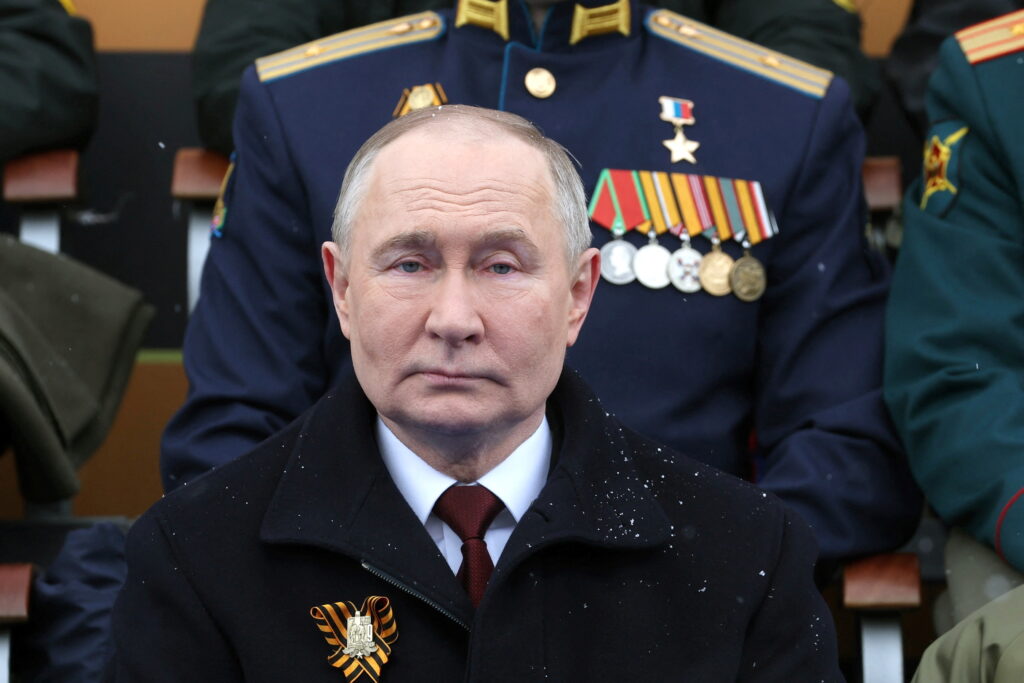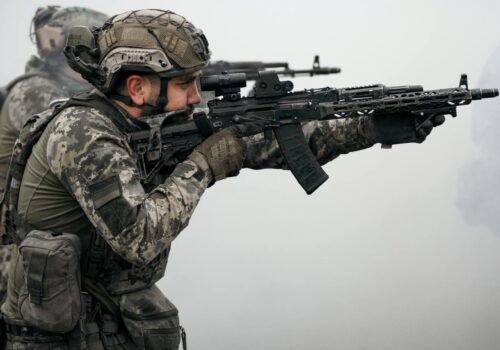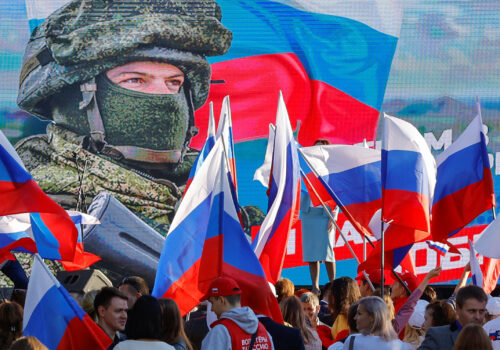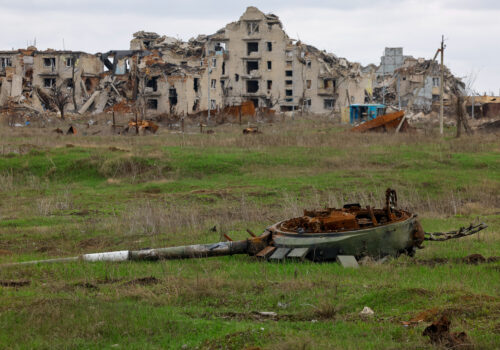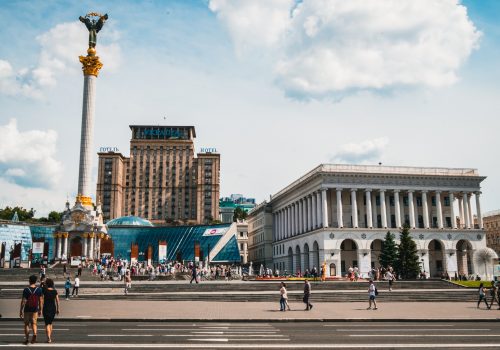Russian President Vladimir Putin has just announced his second unilateral ceasefire in a matter of days, but this emerging trend does not reflect any sincere desire for peace. On the contrary, Putin’s brazen new ceasefire gambit suggests a man emboldened by Western weakness who is now more confident than ever that he can continue to game the US-led peace process without seriously disrupting his invasion of Ukraine.
In early March, Ukraine agreed to an American proposal for an unconditional ceasefire. Almost two months later, Russia still refuses to follow suit. As a result, many observers are drawing the obvious conclusion that Russia rather than Ukraine is the primary obstacle to peace. In an apparent bid to counter this growing consensus and distract attention from Russia’s reluctance to end the war, Putin has recently begun declaring his own brief ceasefires. His first step was to announce a surprise 30-hour Easter truce during traditional Orthodox religious festivities in Russia and Ukraine. Putin is now proposing a three-day break in hostilities to mark Victory Day on May 9.
The timing of Putin’s latest truce is particularly interesting. Critics note that his Victory Day ceasefire coincides with a major military parade in Moscow to mark the eightieth anniversary of the Soviet victory over Nazi Germany. Putin is expected to host a number of high-ranking foreign dignitaries at the event, including the leaders of China, Brazil, and India. Needless to say, it would be hugely embarrassing for the Kremlin dictator if his propaganda parade was overshadowed by Ukrainian airstrikes in Moscow or elsewhere in Russia.
Many have already noted the cynicism of Putin’s proposal. Ukrainian President Volodymyr Zelenskyy reacted by reaffirming his commitment to an unconditional 30-day ceasefire while accusing the Kremlin of trying to “manipulate the world” and “deceive the United States” with empty ceasefire stunts. “We value human lives, not parades,” he stated. Officials in Brussels were similarly critical of the Kremlin. “Russia could stop the killing and the bombing at any time, so there’s absolutely no need to wait until May 8,” commented European Commission spokesperson Anita Hipper. Meanwhile, the Trump White House responded by emphasizing the need for a “permanent ceasefire.”
Stay updated
As the world watches the Russian invasion of Ukraine unfold, UkraineAlert delivers the best Atlantic Council expert insight and analysis on Ukraine twice a week directly to your inbox.
Putin’s shamelessly self-serving call for a Victory Day ceasefire says much about his opportunistic approach toward the faltering peace process initiated by the United States in early 2025. Much like the 30-hour lull in fighting initiated by Putin over the Easter holiday, the three-day truce proposed this week is far too short to have any meaningful impact on negotiations to end the war in Ukraine. However, it does allow the Russian ruler to pose as peacemaker while continuing his invasion.
Putin’s headline-grabbing truces are also an important part of his stalling tactics as he seeks to drag out peace talks indefinitely without exhausting US President Donald Trump’s patience or closing the door on a potential broader thaw in bilateral relations with the United States. It is no coincidence that both of Putin’s recent ceasefire announcements have come in the immediate aftermath of critical comments from Trump indicating that the US leader is growing tired of Russian excuses. Indeed, news of the Victory Day truce emerged just hours after Trump had questioned Russia’s willingness to end the war and commented that he feared Putin was “tapping me along.”
Eurasia Center events

While Putin engages in dubious peace gestures, Russian Foreign Minister Sergei Lavrov has recently provided a far more realistic view of the Kremlin’s war aims and continued commitment to the conquest Ukraine. In an interview with Brazilian newspaper O Globo that was published on the same day as Putin’s Victory Day ceasefire announcement, Lavrov listed Russia’s conditions ahead of possible negotiations with Ukraine. These included international recognition of Russia’s right to five partially occupied Ukrainian provinces, the removal of all sanctions imposed on Russia since 2014, guarantees over Ukrainian neutrality, and the reduction of Ukraine’s army to a skeleton force.
Crucially, Moscow also insists on Ukraine’s “denazification,” which is recognized as Kremlin code for the comprehensive “de-Ukrainianization” of the country and the reestablishment of Russian dominance in all spheres of public life. If implemented, these punishing Russian terms would not lead to a sustainable peace. Instead, they would serve as an act of capitulation, setting the stage for the final destruction of Ukraine as a state and as a nation.
All this is a very long way from the Trump administration’s frequent assertions that both sides must be willing to compromise if they wish to achieve a viable settlement. While Ukraine has repeatedly backed calls for an unconditional ceasefire and has accepted the need for temporary territorial concessions, Russia continues to pursue maximalist goals that no Ukrainian government could possibly accept.
During the first hundred days of his presidency, Trump has sought to advance the peace process by pressuring Ukraine while offering Russia a wide range of incentives to engage. It should now be abundantly clear that this uneven approach has backfired. Far from persuading Putin to offer concessions of his own, Trump’s appeasement policies have convinced the Kremlin to escalate its demands further. We have now reached the point where Putin believes he can personally pause the war to host a military parade on Red Square before resuming his invasion three days later. This absurd situation makes a complete mockery of Trump’s peace efforts and threatens to leave him looking foolish.
If Trump is serious about bringing Russia to the negotiating table, he must first demonstrate a readiness to impose crippling costs on the Kremlin. The current US strategy toward Russia can be characterized as all carrots and no sticks. This is useless against a regime that only understands the language of strength and regards any attempts at compromise as signs of weakness. It also gravely underestimates the high stakes underpinning Russia’s invasion. Putin views the war in Ukraine as an historic mission to reverse the imperial collapse of 1991 and return Russia to its rightful place as a global superpower. He will not abandon this mission unless the alternative is defeat.
Peter Dickinson is editor of the Atlantic Council’s UkraineAlert service.
Further reading
The views expressed in UkraineAlert are solely those of the authors and do not necessarily reflect the views of the Atlantic Council, its staff, or its supporters.

The Eurasia Center’s mission is to enhance transatlantic cooperation in promoting stability, democratic values, and prosperity in Eurasia, from Eastern Europe and Turkey in the West to the Caucasus, Russia, and Central Asia in the East.
Follow us on social media
and support our work
Image: Russian President Vladimir Putin attends a military parade on Victory Day, which marks the 79th anniversary of the victory over Nazi Germany in World War Two, in Red Square in Moscow, Russia. May 9, 2024. (Sputnik/Mikhail Klimentyev/Pool via REUTERS)
